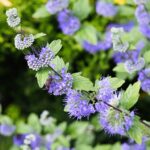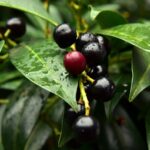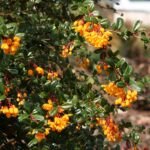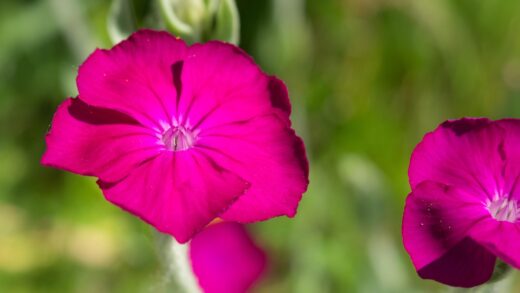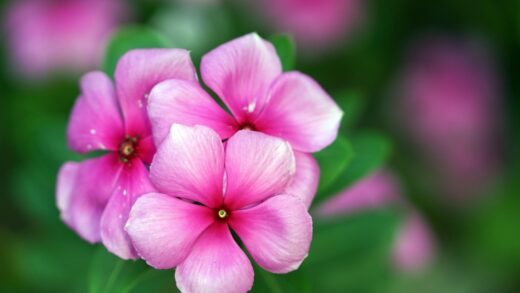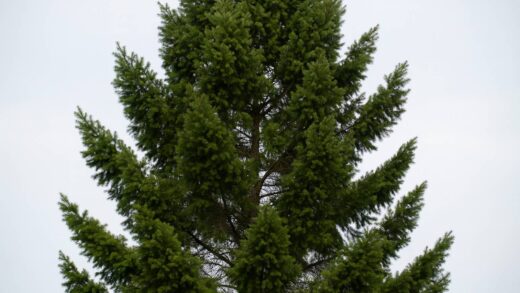Pruning is one of the most important maintenance tasks for a dog rose, a practice that shapes its health, appearance, and productivity. Unlike the intensive pruning required by many hybrid roses, the approach for this wild species is more about maintenance and rejuvenation than about forcing a particular shape. The primary goals are to promote good air circulation, remove unproductive wood, and encourage the growth of new, vigorous canes that will bear flowers and hips. A well-pruned dog rose is not only healthier and more resistant to disease but also more aesthetically pleasing, displaying its natural, gracefully arching form to its best advantage. Understanding the principles behind the cuts is essential for pruning with confidence and achieving the desired results.
The fundamental reason for pruning a dog rose is to maintain its vitality. Over time, a rose shrub can become a tangled thicket of old and new canes. The older canes become less productive, producing fewer flowers and contributing to congestion in the center of the plant. This congestion restricts airflow, creating a humid microclimate that is a perfect breeding ground for fungal diseases like powdery mildew and black spot. Pruning selectively removes this old, crowded wood, opening up the plant to light and air and stimulating the growth of fresh, healthy, and more floriferous stems from the base.
Pruning is also a tool for shaping the plant and controlling its size. While the dog rose has a beautiful natural habit, it can become overly large and unruly in a smaller garden setting. Strategic cutting back can help to keep the shrub within its allotted space without sacrificing its graceful character. It also allows for the removal of any awkwardly placed or crossing branches that detract from the overall structure of the plant. A few well-chosen cuts can significantly improve the plant’s form and how it sits within the broader garden design.
Finally, pruning can be used to influence the balance between flowering and hip production. The dog rose flowers on wood that grew in the previous year. Therefore, a hard prune all over will reduce the number of flowers in the subsequent season. A more selective, renewal-style pruning ensures that there is always a good supply of one-year-old wood ready to bloom. After flowering, deadheading (removing the spent blooms) will encourage a second flush of flowers on some roses, but for the dog rose, it will prevent the formation of the highly valued hips. This is a key consideration when deciding on the pruning strategy after the main flowering period has finished.
The purpose and principles of pruning
The overarching purpose of pruning any plant, including the dog rose, is to work with its natural growth habit to create a healthier, more productive, and more attractive specimen. It is not about forcing the plant into an unnatural shape, but about enhancing its innate characteristics. The three main principles of pruning are often summarized as the “three D’s”: removing any wood that is dead, damaged, or diseased. This is the first and most important step in any pruning session, as this wood serves no purpose and can be a source of problems.
More articles on this topic
A second key principle is to improve the structure of the plant to maximize air circulation. This involves thinning out the shrub, particularly in the center, to prevent the canes from becoming a dense, tangled mass. The goal is to create an open, vase-like shape that allows air to move freely through the entire plant. This simple act is one of the most effective preventative measures against the fungal diseases that commonly affect roses. It ensures that leaves dry quickly after rain, making it difficult for fungal spores to germinate.
The third principle is that of renewal. The dog rose, like many shrubs, is constantly sending up new shoots from its base. Renewal pruning encourages this process by selectively removing a proportion of the oldest, thickest, and least productive canes each year. This stimulates the plant to produce new, vigorous basal shoots that will grow and mature to become the flowering wood of the future. This cyclical process ensures the shrub remains youthful and productive over its entire lifespan, rather than becoming old and woody.
Finally, a universal principle of pruning is to always use the right tools for the job and to make clean cuts. Sharp secateurs, loppers, or a pruning saw are essential to avoid crushing or tearing the plant’s tissues, which can create entry points for disease. Pruning cuts should typically be made just above an outward-facing bud. This directs the resulting new growth outwards, away from the center of the plant, which contributes to the desired open structure and prevents the new shoots from crossing over existing branches.
The best time to prune dog rose
Timing is a critical factor in successful pruning. For the dog rose, the main structural and renewal pruning should be carried out during its dormant season. The ideal window is in late winter or very early spring, typically between February and March in the Northern Hemisphere. Pruning at this time, just before the plant breaks dormancy and new growth begins, has several advantages. The plant is not actively growing, so the shock of pruning is minimized, and the absence of leaves makes it much easier to see the overall structure of the shrub and identify which canes need to be removed.
More articles on this topic
Pruning in late winter, after the worst of the severe cold has passed, also reduces the risk of the new cuts being damaged by hard frosts. Making large pruning cuts in the autumn is generally discouraged, as these fresh wounds can be slow to heal and may be more susceptible to infection by canker-causing fungi or damage from winter cold. The plant’s energy reserves are also at their highest in late winter, stored in the roots and woody stems, ready to fuel a strong burst of new growth from the pruning cuts as soon as the weather warms up.
While the main prune is a winter task, light pruning and tidying can be done at other times of the year. Any canes that are clearly dead, damaged, or showing signs of disease can and should be removed as soon as they are noticed, regardless of the season. This helps to maintain the health of the plant and prevents problems from spreading. This type of incidental pruning can be done at any time without harming the plant.
It is also important to consider the plant’s flowering and fruiting cycle. The dog rose produces its beautiful hips on the pollinated flowers of the summer. Therefore, if a good crop of hips is desired, you should not deadhead the spent flowers after the main blooming period in early summer. The flowers must be left on the plant to allow the hips to develop. Any pruning to shape the plant or trim back long shoots after flowering should be done with care to avoid removing the developing hips.
Techniques for maintenance pruning
Maintenance pruning for an established dog rose is an annual task focused on keeping the shrub healthy and productive. The first step is always to inspect the entire plant and remove any wood that is dead, damaged, or diseased—the “three D’s.” Dead wood will be dry and brittle, often dark in color, with no green under the bark. Damaged wood includes any canes that are broken or have been rubbing against each other, creating a wound. These should be cut back to a healthy side shoot or to the base of the plant.
After this initial clean-out, the next step is to thin out the shrub. The goal is to create an open framework of strong, healthy canes. Start by removing any weak, spindly stems that are unlikely to be productive. Then, look for canes that are crossing over each other or growing into the center of the plant, and remove the one that is in the worse position. This process of thinning improves air circulation and allows more light to reach the interior of the shrub.
The third and most important part of maintenance pruning is renewal. On a mature shrub, aim to remove about one-quarter to one-third of the oldest, thickest canes each year. These are typically darker, woodier, and may have more peeling bark than the younger, smoother, greener canes. Trace these old canes back to their point of origin and cut them out as close to the base of the plant as possible. This encourages the growth of strong new shoots from the crown, keeping the plant in a constant cycle of rejuvenation.
Finally, after the thinning and renewal cuts have been made, you can shorten the remaining healthy canes to encourage branching and maintain a desirable shape and size. As a general rule, reduce the length of the main canes by about one-third. Make each cut about 5mm above a healthy, outward-facing bud, with the cut slanting away from the bud. This directs the new growth outwards, further contributing to the open, vase-like structure that is ideal for a healthy and floriferous dog rose.
Hard pruning for rejuvenation
There are occasions when a more drastic approach, known as rejuvenation or hard pruning, is necessary. This technique is reserved for dog rose shrubs that have become severely overgrown, congested, and unproductive after many years of neglect. A shrub in this state will typically be a dense thicket of old, woody canes with very little new growth and poor flowering. Hard pruning is a way to effectively reset the plant, stimulating a complete flush of new growth from the base.
The best time to carry out a hard prune is during the dormant season, in late winter, just as for regular maintenance pruning. This gives the plant the entire growing season to recover and produce new canes. The process is straightforward but can seem brutal. It involves cutting all of the canes back to within 15-30 centimeters of the ground. This removes all the old, tired wood and forces the plant’s crown to produce a large number of new, vigorous basal shoots.
After performing such a drastic prune, it is important to provide the plant with good aftercare to support its recovery. Ensure the soil around the plant is healthy by applying a thick layer of well-rotted compost or manure as a mulch. This will provide the nutrients needed to fuel the burst of new growth. It is also important to keep the plant well-watered during its first season of recovery, especially during any dry spells.
It is important to understand that a hard-pruned dog rose will not flower in the first season following the prune. This is because it flowers on the previous year’s wood, and all of that wood has been removed. The first year will be dedicated to producing a new framework of strong canes. These new canes will then mature and produce a magnificent display of flowers in the second year. From this new framework, you can then begin a regular cycle of annual maintenance pruning to keep the rejuvenated shrub in perfect condition for years to come.










